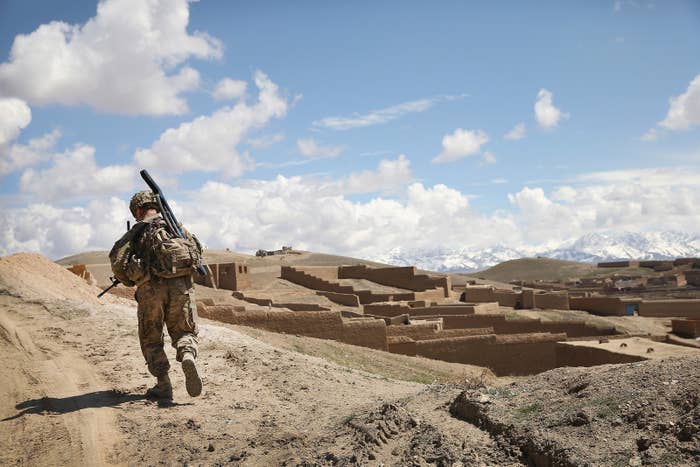
I never fought al-Qaeda. None of us did, really. It was 2011, a decade into an indecisive war, and few even pretended this fight was about bin Laden, the Twin Towers, or a smoking Pentagon. No, we chased the Taliban — or at least a motley collection of nationalists, bored teenagers, heroin dealers, and religious farmers calling themselves “Taliban” — around southern Afghanistan for a year or so.
Back then, in the bad old days, the US had 100,000 troops on the ground. No matter: It’s not as though we were winning. So we came back to Fort Riley, Kansas — well, not all of us — and carried on with our lives, pretending Afghanistan had never happened.
That was five years ago, when the Obama administration was in the midst of its own doomed approach to “winning” in Afghanistan. It was clear from the start that despite his campaign rhetoric labeling Afghanistan the “good” war, President Obama had his doubts about escalation — and his heart was never really in it. Nonetheless, he lets his generals and hawkish cabinet members cajole him into a massive troop surge, so my gang and I were sent off to fight. We tilted at windmills for a bit, and, despite having tons of troops in the country, left the place no better than we’d found it.
Today the US has about 11,000 service members still stationed in the "graveyard of empires." The Taliban has only grown in strength, Afghan Security Force casualties are through the roof, and now — after 16 years of absurdity — Americans were recently treated to President Trump’s “new strategy” for “victory.” I’m no gambler, but the safe money is on the Taliban. I’ll give you 10 to 1 odds.
The president tells us that “a hasty withdrawal would create a vacuum that terrorists, including ISIS and al-Qaeda, would instantly fill, just as happened before September 11.” Really? Is Afghanistan truly a vital national security threat? If so, the president just made the slippery case for an expanded American military presence in Yemen, Libya, Nigeria, Somalia, Syria, Iraq, Saudi Arabia, Chechnya, and, well…Europe. That would be a lot of boots on the ground.
And make no mistake, as much as Trump loathes those he declares losers — whether Jeb Bush, Hillary Clinton, or now the Taliban — the US military isn’t coming anywhere close to victory. No, the president and his national security staff are reportedly sending about 4,000 more advisers. Back in 2011, we barely scratched the surface with 100,000 troops. Why should US citizens believe a measly 4,000 can make a dent?
It can’t. It won’t. It’s not supposed to. What passes for military strategy these days is little more than the postponement of defeat, delaying the inevitable, and playing for a tie. Better still is passing off the strategic hot potato to the next administration.
Any serious soul-searching would lead one to a few inconvenient truths:
First, there is no military solution to Afghanistan or terrorism in general.
Second, the tradition of the “citizen-soldier” is dead and buried. A warrior caste of poor souls fights our modern wars.
Finally, there is no end in sight. My oldest son started high school last month. He was born into this war and he may also die in it.
When it came to Afghanistan, President Trump once opined that his “original instinct was to pull out.” Well, Donald, this time you should’ve gone with your gut.
Major Danny Sjursen is a US Army strategist and former history instructor at West Point. He served tours with reconnaissance units in Iraq and Afghanistan. He has written a memoir and critical analysis of the Iraq War, Ghost Riders of Baghdad: Soldiers, Civilians, and the Myth of the Surge. He is a regular contributor to TomDispatch, and his work has appeared in The Nation, HuffPost, Mother Jones, and Salon. He lives with his wife and four sons in Lawrence, Kansas.
Follow him on Twitter @SkepticalVet.
Note: The views expressed in this article are those of the author, expressed in an unofficial capacity, and do not reflect the official policy or position of the Department of the Army, Department of Defense, or the US government.
